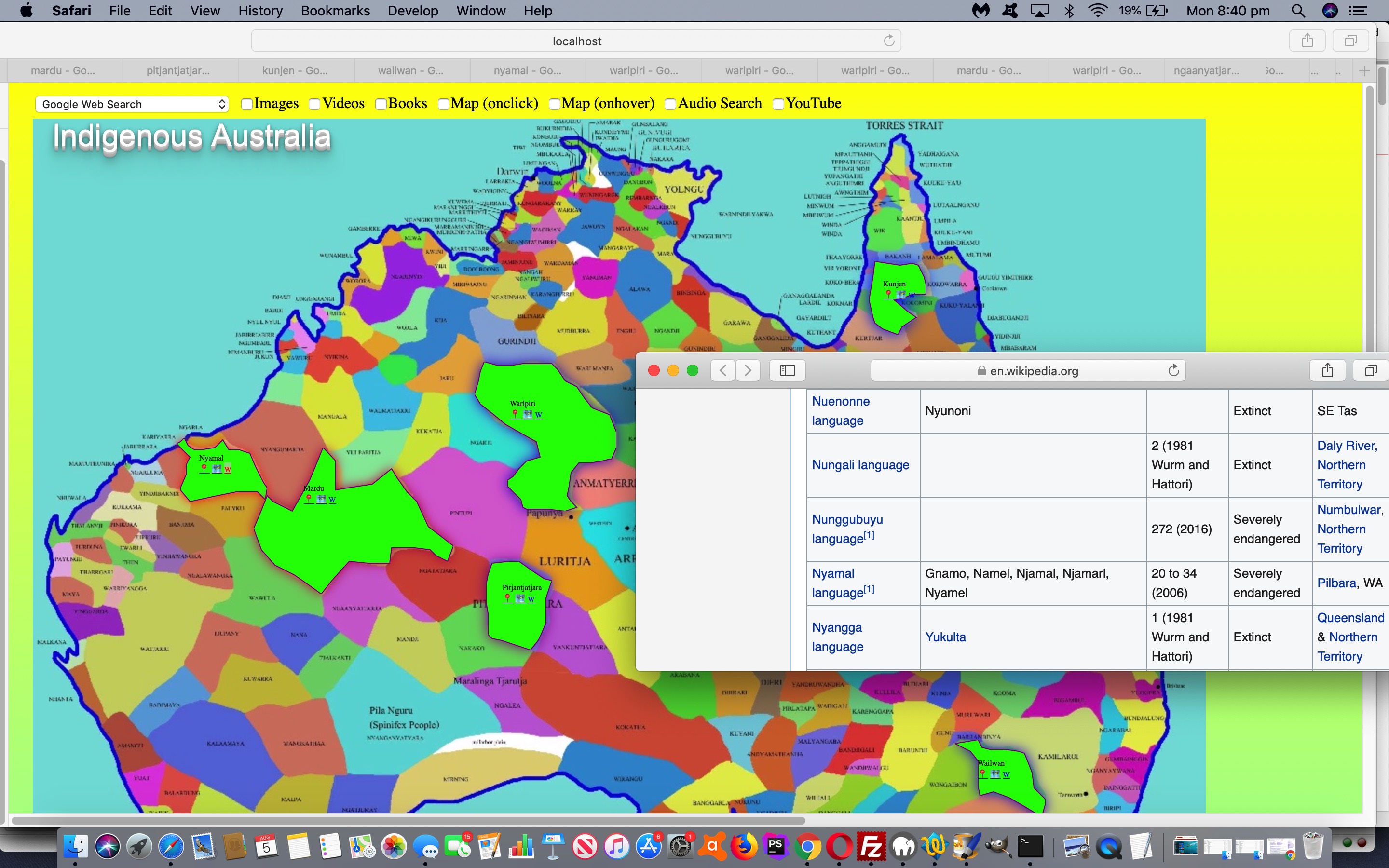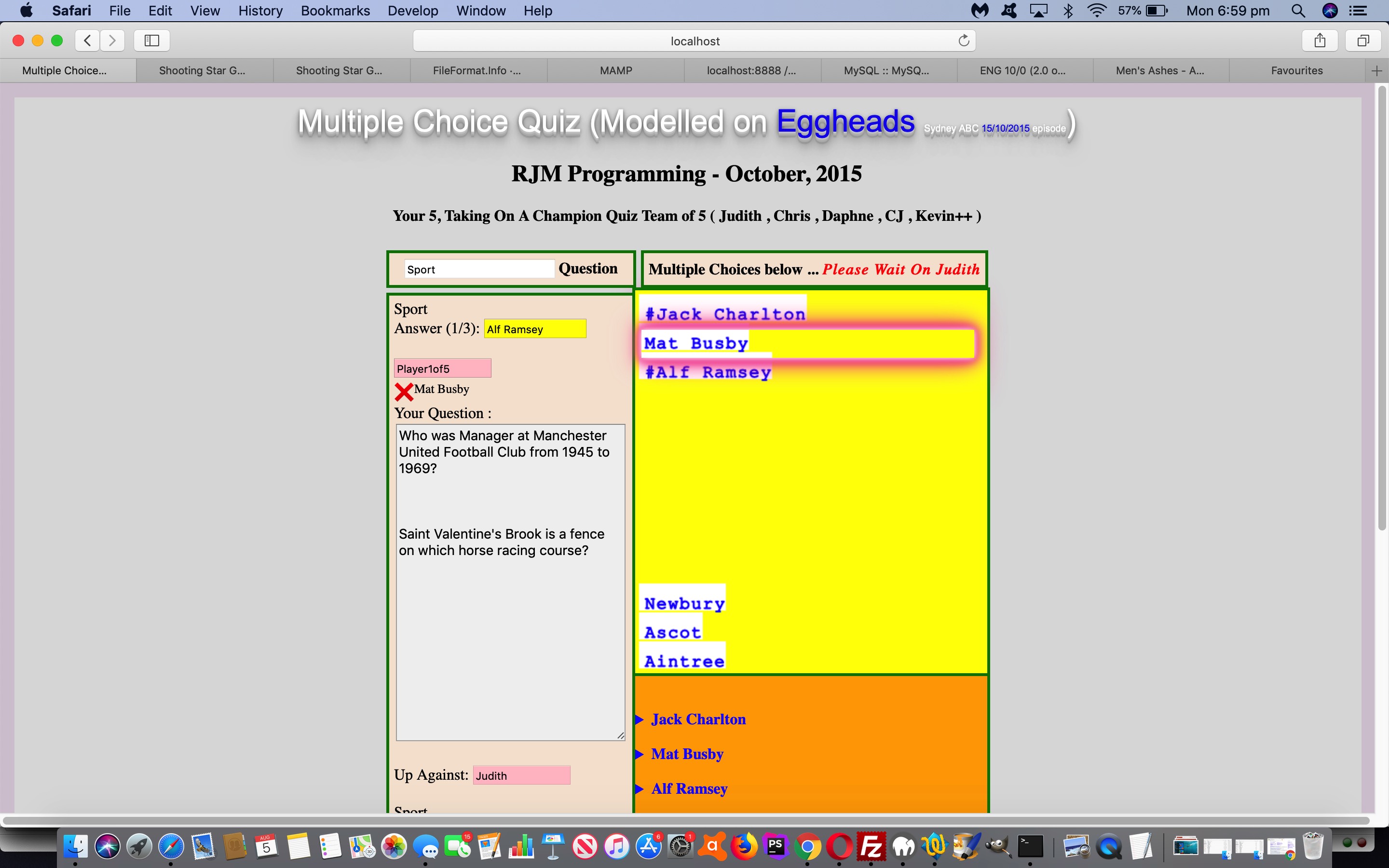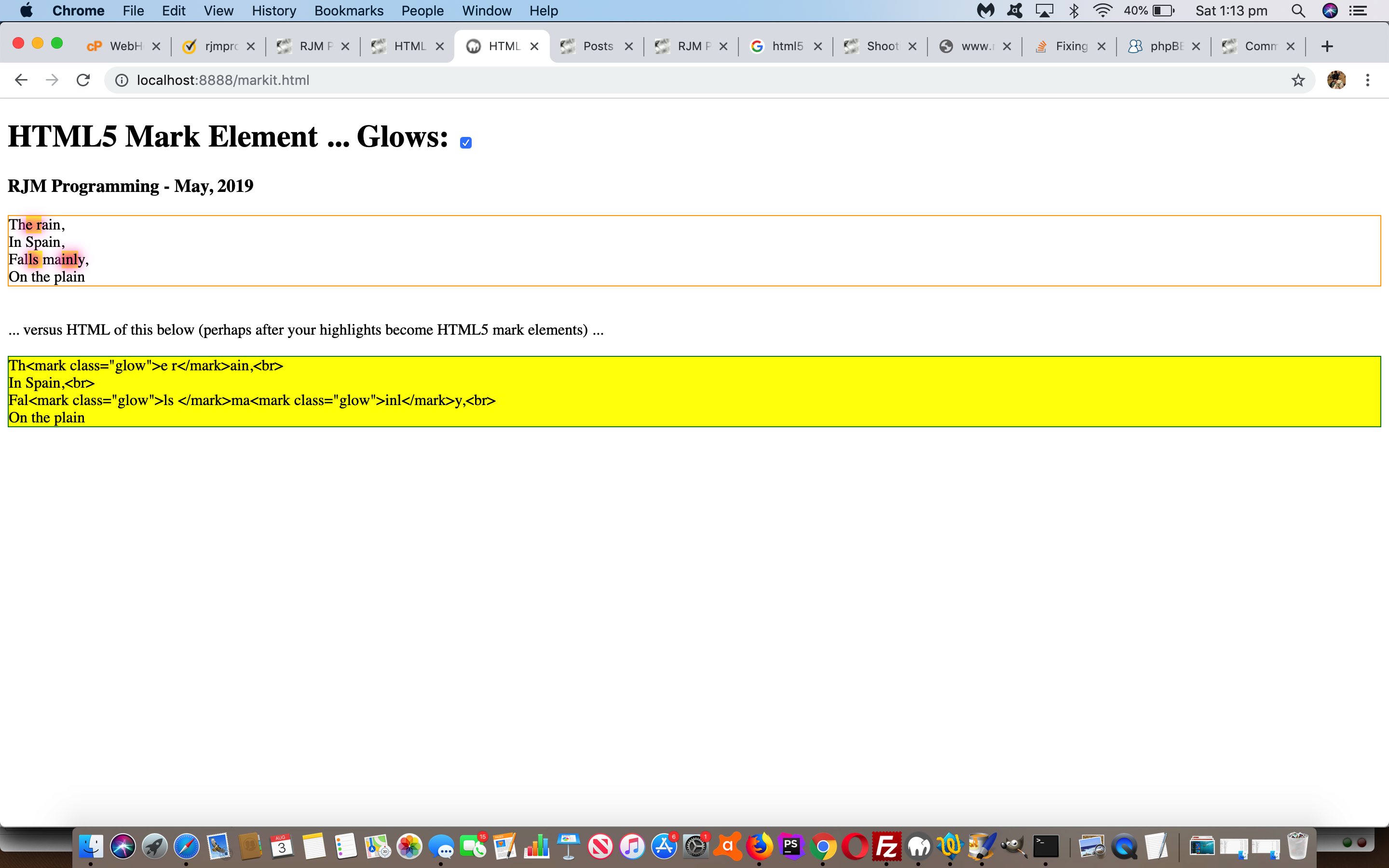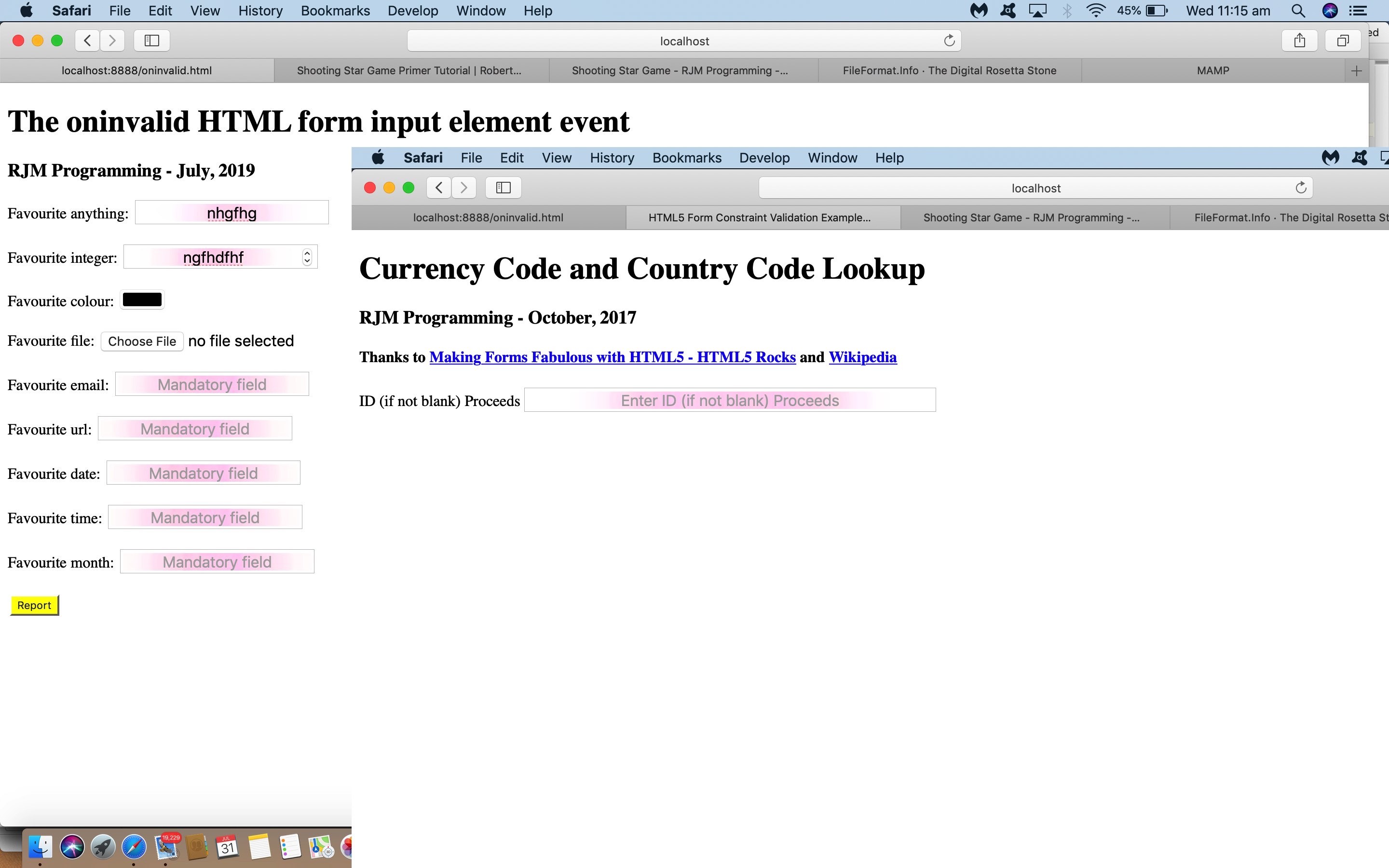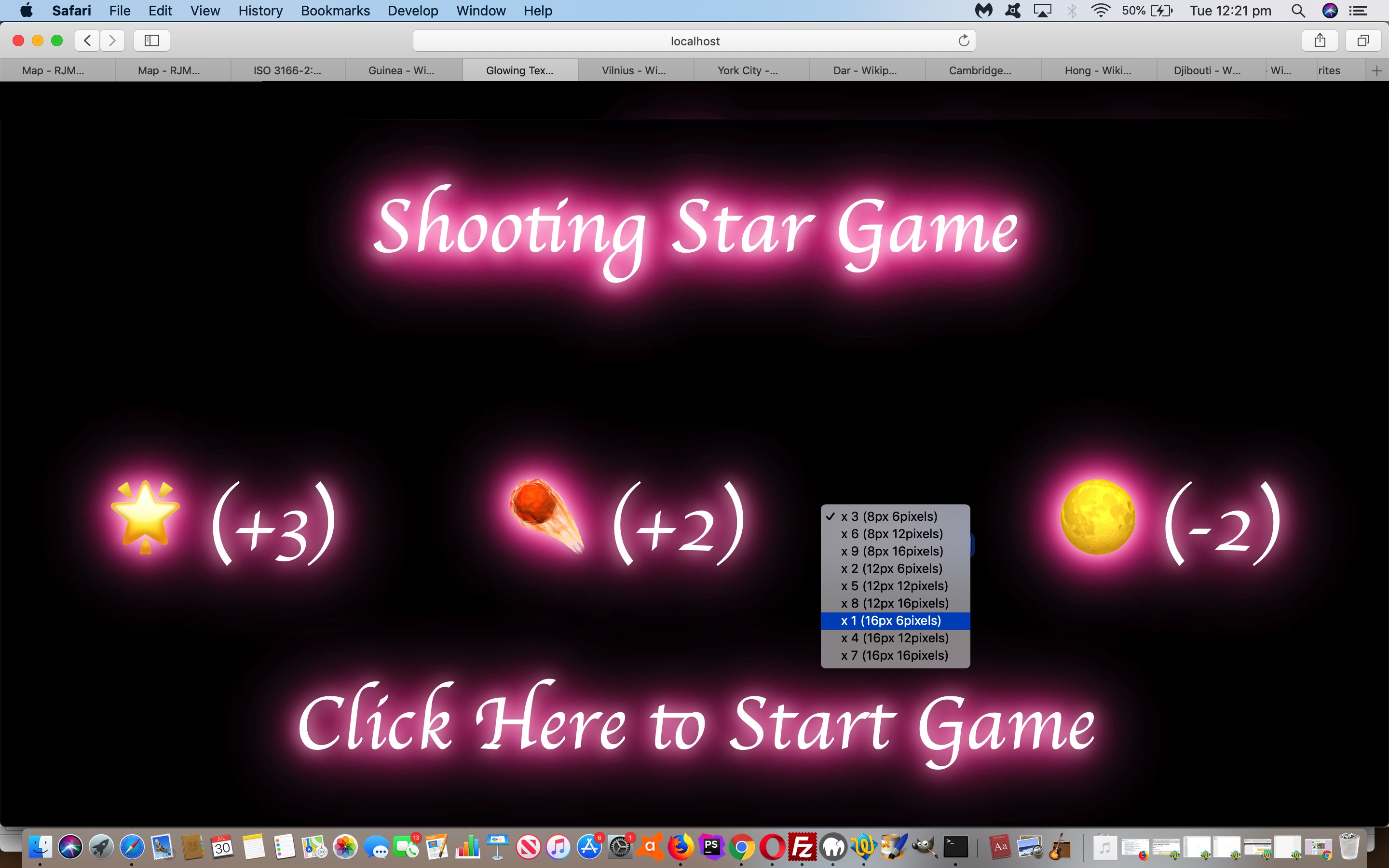In the “glowing” CSS styling work we’ve been talking about recently, as with yesterday’s Multiple Choice Quiz with Glowing Box Tutorial “Glowing Box”, today we have for you …
- HTML image map element … with …
- area shape=”poly” (polygon) elements (that represent approximate coverage for Australian Indigenous Language areas in Australia) … overlaid by …
- SVG polygon elements (that come into play when an area element is clicked/touched … all old news you can read from Australian Indigenous Language SVG Overlay Tutorial … but new today we add …
- “Glowing Polygon” animated drop shadow (and thanks to this great link for help here) for that SVG polygon as per the new CSS styling …
<style>
/* Thanks to https://www.w3schools.com/howto/tryit.asp?filename=tryhow_css_glowing_text */
svg {
font-size: 16px;
color: #fff;
text-align: center;
-webkit-animation: glow 1s ease-in-out infinite alternate;
-moz-animation: glow 1s ease-in-out infinite alternate;
animation: glow 1s ease-in-out infinite alternate;
color: black;
-webkit-filter: drop-shadow(0 0 5px red);
filter: drop-shadow(0 0 5px red);
}
@-webkit-keyframes glow {
0% { -webkit-filter: drop-shadow(0 0 5px red); filter: drop-shadow(0 0 5px red); }
100% { -webkit-filter: drop-shadow(0 0 8px blue); filter: drop-shadow(0 0 8px blue); }
}
</style>
… an effect quite eye-catching as you click/touch in a language region to find out more.
Perhaps you want to use this changedHTML and Javascript and CSS aboriginal_language_regions

Previous relevant Multiple Choice Quiz with Glowing Box Tutorial is shown below.
We’re going from “Glowing Text” ideas below, with HTML5 Mark Tag with Glowing Text Tutorial, to “Glowing Box” ideas, starting today, that we apply in the context of a Multiple Choice Quiz.
As far as online quizzes go, don’t know if you agree, but we think our best chance to remember our learning is, particularly regarding incorrect (quiz) answers, to either …
- trap the user with a correct answer with a Javascript popup (eg. alert) window, awaiting the press of a button … and/or …
- really “in your face” highlighting of the correct answer (particularly in the case of a multiple choice scenario) with attention grabbing (CSS) styling
… and so, for the latter, we queue the new “Glowing Box” (CSS) styling, which (to us) is the same as the (brilliant CSS W3schools glowing text idea) “Glowing Text” styling except where you had “text-shadow” in the keyframes section (for “Glowing Text”) we use “box-shadow” in that same keyframes section (for “Glowing Box”). We add this onto our previous efforts with HTML/Javascript Multiple Choice Quiz Reveal Tutorial.
With thechanged multiple_choice_quiz

<style>
/* Thanks to https://www.w3schools.com/howto/tryit.asp?filename=tryhow_css_glowing_text */
.glow {
font-size: 16px;
color: #fff;
text-align: center;
-webkit-animation: glow 1s ease-in-out infinite alternate;
-moz-animation: glow 1s ease-in-out infinite alternate;
animation: glow 1s ease-in-out infinite alternate;
color: black;
}
@-webkit-keyframes glow {
from {
box-shadow: 0 0 3px #fff, 0 0 5px #fff, 0 0 37px #e60073, 0 0 9px #e60073, 0 0 11px #e60073, 0 0 13px #e60073, 0 0 15px #e60073;
}
to {
box-shadow: 0 0 24px #fff, 0 0 6px #ff4da6, 0 0 8px #ff4da6, 0 0 10px #ff4da6, 0 0 12px #ff4da6, 0 0 14px #ff4da6, 0 0 16px #ff4da6;
}
}
</style>
… overlaying correct Multiple Choice (set) answers with a very compelling (div “box” 3D looking) display.
Previous relevant HTML5 Mark Tag with Glowing Text Tutorial is shown below.
To get the background to our attention seeking “mark” tag “glowing text” application please read …
- HTML5 Mark Tag Div Contenteditable Tutorial … along with …
- Glowing Text Validation Primer Tutorial‘s thread of blog postings below inspired by the CSS brilliance of W3School’s glowing text idea
… today’s use quite apt for this “mark” tag’s text highlighting talent. It’s default highlighting is a strong yellow background colour, but you can apply this “glowing text” CSS class to achieve a more “in your face result”, which you can try (thechanged markit

… yourself, to see what the effect is of “mark highlighting” and “glowing text”.
Previous relevant Glowing Text Validation Primer Tutorial is shown below.
Yesterday’s application of the use of CSS brilliance of W3School’s glowing text idea with Shooting Star Game Primer Tutorial was just one idea regarding the use of glowing text. What about using it with form validation?
Yes, that’s “a goer” … see, even the pamplettes are nodding. The reason, of course, is that glowing text is a mechanism whereby you can grab the attention of even the most blasé of online users. And especially if the field you are “form validating” is mission critical, this could be a good ploy.
See how we apply this (by making mistakes filling in the forms) with …
- thechanged html5_form_constraint_validation
html‘s live
run as featured on HTML5 Form API Validation Revisit Tutorial
- thechanged oninvalid
html live
run as featured on HTML Oninvalid Event Form Validation Primer Tutorial
Previous relevant Shooting Star Game Primer Tutorial is shown below.
We’ve got one of those pretty simple “click ’em up” games for you today, inspired by the CSS brilliance of W3School’s glowing text idea, thanks.
That set us to thinking of Emojis we could apply (in front of the great background ideas derived from this advice) and looked up Emojipedia (is good for looking up Emoji names or concepts in words) and onto FileFormat Information (is great for HTML Entity determinations for your less complex Emojis) and even Iemoji (is great for HTML Entity determinations for Emojis of all complexities) to determine some components to our game, those being …
… star
… comet
… moon
… which, in turn, led to thoughts regarding a game …
- for one player
- that rewards fast reflexes … and …
- scores via onclick event logic on each component
- according to levels of difficulty … and …
- lessens the score for “blazing away” clicks (or touches) … for that, if a player score is (made up of) score/goes then “goes” is incremented by any document.body onclick event during the game
Levels of difficulty … pour quoi? Well, we can change the …
- Emoji font-size … and/or …
- Movement potential of emoji (in pixels) in any “setTimeout(movecomponents, 100);” 1/10th of a second call cycle
Have a go of today’s shooting_star_game
If this was interesting you may be interested in this too.
If this was interesting you may be interested in this too.
If this was interesting you may be interested in this too.
If this was interesting you may be interested in this too.
If this was interesting you may be interested in this too.





 Menu
Menu






